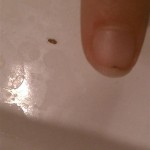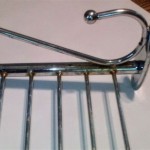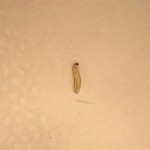Bathroom Sink Faucet Aerator Clogged: Causes, Solutions, and Prevention
A bathroom sink faucet aerator serves a crucial purpose: it mixes air with water, creating a smoother, more consistent water stream. This reduces splashing and conserves water, leading to lower water bills. However, over time, the aerator can become clogged with mineral deposits, sediment, and other debris, diminishing its effectiveness. A clogged aerator can result in weak water pressure, inconsistent flow, and even spitting or spraying of water. Understanding the causes of a clogged aerator and knowing how to address the problem is essential for maintaining a functional and efficient bathroom sink.
The consequences of ignoring a clogged aerator extend beyond mere inconvenience. Reduced water flow can impact daily hygiene routines, making tasks like handwashing and teeth brushing less effective. Furthermore, the sputtering water can lead to increased water waste, negating the intended water-saving benefits of the aerator. In severe cases, the back pressure caused by a clogged aerator can even contribute to minor plumbing issues within the faucet itself. Therefore, regular maintenance and timely cleaning are crucial for preserving the lifespan of both the aerator and the faucet.
Understanding the Common Causes of Aerator Clogs
Several factors contribute to the buildup of debris within a bathroom sink faucet aerator. Identifying these causes is the first step towards preventing future clogs.
Mineral Deposits: Hard water, characterized by a high concentration of minerals like calcium and magnesium, is a primary culprit. As water flows through the plumbing system, these minerals precipitate out of the solution and accumulate inside the aerator's fine mesh screen. Over time, this mineral buildup hardens and restricts water flow, leading to a noticeable reduction in water pressure.
Sediment and Debris: Even in areas with relatively soft water, sediment and debris can find their way into the water supply. This can include sand, rust particles from aging pipes, and even tiny pieces of plumbing components. This debris settles within the aerator, further impeding water flow.
Biofilm Formation: Biofilm, a thin layer of microorganisms, can develop inside plumbing systems, especially in areas with stagnant water or fluctuating temperatures. This biofilm can detach and accumulate within the aerator, contributing to clogging and potentially affecting water quality.
Old Plumbing: Older plumbing systems are more prone to corrosion and the shedding of internal materials. Rust particles, scale, and other debris from aging pipes contribute significantly to aerator clogging. Replacing old or damaged plumbing can drastically reduce the frequency of aerator maintenance.
Step-by-Step Guide to Cleaning a Clogged Aerator
Cleaning a clogged bathroom sink faucet aerator is a relatively simple process that can be accomplished with common household tools. By following these steps, the aerator can be restored to its optimal functionality.
Gather Necessary Tools: Before beginning, assemble the required tools: an adjustable wrench or pliers (preferably with a soft cloth to protect the faucet finish), a small container or bowl, an old toothbrush or small cleaning brush, white vinegar, and a small pin or needle.
Turn Off the Water Supply: Locate the shut-off valves under the sink and turn them off to prevent water from flowing while the aerator is removed. This critical step avoids unnecessary mess and potential water damage.
Remove the Aerator: Carefully use the adjustable wrench or pliers to loosen the aerator housing. Wrap a cloth around the faucet and aerator housing to prevent scratches. Gently unscrew the aerator from the faucet spout. Some aerators are designed to be unscrewed by hand; in such cases, avoid using tools to prevent damage.
Disassemble the Aerator: Once removed, carefully disassemble the aerator into its component parts. This usually includes the aerator housing, a mesh screen, a rubber washer, and possibly a flow restrictor. Take note of the order in which the parts are assembled to ensure proper reassembly later.
Clean the Components: Soak the aerator components in white vinegar for at least 30 minutes to dissolve mineral deposits. Use the old toothbrush or small cleaning brush to scrub away any remaining debris. For stubborn clogs, use the small pin or needle to carefully dislodge particles from the mesh screen. Rinse all parts thoroughly with clean water.
Reassemble the Aerator: Once the components are clean and dry, reassemble the aerator in the correct order. Ensure that the mesh screen and rubber washer are properly seated.
Reinstall the Aerator: Screw the reassembled aerator back onto the faucet spout, tightening it gently with the adjustable wrench or pliers. Avoid overtightening, as this can damage the aerator or the faucet.
Turn On the Water Supply and Test: Turn the water supply back on and check the water flow. Observe the water pressure and the consistency of the water stream. If the aerator is still clogged, repeat the cleaning process or consider replacing the aerator entirely.
Preventative Measures to Minimize Aerator Clogs
While cleaning a clogged aerator is a manageable task, preventing clogs in the first place is a more efficient long-term solution. Implementing preventative measures can significantly reduce the frequency of cleaning and extend the lifespan of the aerator.
Regular Cleaning Schedule: Establish a regular cleaning schedule for the aerator. Cleaning the aerator every 3-6 months, depending on the water quality in the area, can prevent significant buildup. Consistent maintenance prevents the debris from hardening and becoming more difficult to remove.
Install a Water Softener: If hard water is a persistent problem, consider installing a water softener. A water softener removes calcium and magnesium from the water supply, significantly reducing the accumulation of mineral deposits in the aerator and other plumbing fixtures throughout the house.
Flush Plumbing After Repairs: Whenever plumbing repairs are performed, flush the pipes thoroughly to remove any dislodged debris. This prevents sediment and particles from being carried to the aerator and other fixtures.
Install Sediment Filters: Installing sediment filters at the main water supply can trap larger particles of sand, rust, and other debris before they enter the plumbing system. This reduces the amount of sediment that reaches the aerator and other fixtures.
Use a Faucet Water Filter: A faucet water filter, in addition to providing cleaner drinking water, can also help to filter out sediment and minerals that can clog the aerator. These filters are relatively inexpensive and easy to install.
By understanding the causes of clogged bathroom sink faucet aerators, following the cleaning steps outlined, and implementing preventative measures, individuals can maintain optimal water flow, conserve water, and prolong the life of their plumbing fixtures. Regular maintenance and proactive measures are essential for ensuring the efficient operation of the bathroom sink and minimizing water waste.

Dirty Clogged Bathroom Faucet Aerator In Hand Above The Mixer Sink Tap Filter Calcium Slag Stock Photo Adobe

How To Clean Faucet Aerator Simpson Plumbing Llc

How To Clean The Clogged Aerator On A Faucet Diy Oliver

Unclog A Kitchen Faucet Aerator Diy Family Handyman

A Clogged Dirty Faucet Aerator With Calcium Plaque In The Hand Of Plumber Tap Filter Above Bathroom Sink Macro Shot Home Maintenance Stock Photo Adobe

How To Unclog A Faucet Aerator For Dummies

How To Fix Your Flow Delta Faucet Blog

The Big Benefits Of Cleaning And Updating Faucet Aerators Denver Water

How To Clean Faucet Aerators

The Best Ways To Clean A Clogged Faucet Aerator







